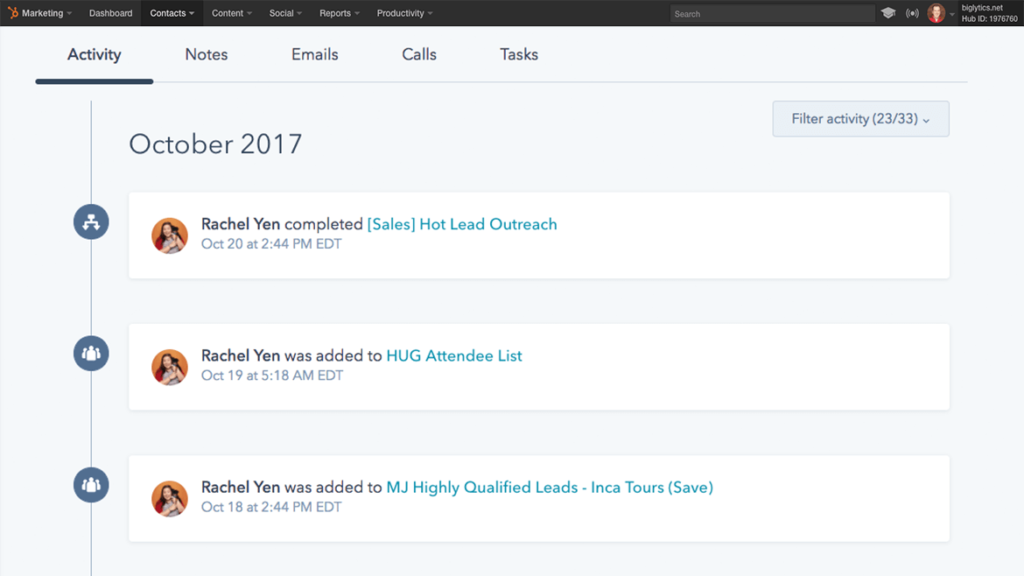How do you feel about lead generation in your business? Are you bringing in a steady flow of quality new leads week after week, or is it more of a trickle?
Every business relies on new leads to thrive, yet those leads can be hard to find. That is particularly true in 2022, as the pandemic wears on and countless companies struggle to keep the doors open.
In this post, we’d like to talk about some tips you can use to improve your lead generation efforts in the year ahead. Rather than overhauling your entire process, you may be able to make some minor adjustments that add up to big improvements. Remember, small changes in your plan can lead to big results, so don’t overlook even the little details.
Tip #1 – It all starts with tracking
You’ll never dial in your lead generation process without accurate tracking. Simply put, lead tracking is too complicated to handle on an informal basis. You need to have a system in place, and you need to use that system consistently across your organisation.
For those who are not yet using a CRM, this means investing in the technology necessary to track leads properly. Yes, you’ll have to spend money to get started, but that should be seen as an investment in the future of your business. Without an appropriate CRM on your side, it will be nearly impossible to keep up with the competition over the long run.
Of course, simply purchasing a CRM alone isn’t going to do much good. You’ll need to use it effectively throughout your organisation, from top to bottom. Be sure that everyone is trained on how to use the software, and also be sure that everyone understands its importance. Even the best CRM is only as useful as the information it is given. Some of the many points that should be tracked in your CRM includes the first contact with a given lead, the source of that lead, important notes from previous conversations, and more.

Struggling to think of how you can maximise your lead generation?
Our FREE eBook gives you 30 tips, tricks and ideas to help your lead generation efforts reach their full potential. 💪
Tip #2 – Dial in your metrics
It’s hard to make good decisions without good data. By properly tracking some key metrics with regard to your lead generation and conversion process, you can make choices that will optimise the funnel and improve your return.
If you are just getting started with tracking lead generation metrics, the two below are a great place to begin.
- Cost to Acquire Customer. This one is just as it sounds — you are tracking the cost of bringing a new customer into your business. It might be a little tricky to determine this number at first, but you should be able to get there with a little refinement in your process. All you really need to know is how much money is being invested in the process of getting new customers. Once you divide that investment by the total number of new customers you’ve acquired over a given time period, you’ll have your cost to acquire a customer, or CAC.
- Customer Lifetime Value. Another metric that is pretty much self-explanatory. For Customer Lifetime Value, or CLV, you will want to determine how much — on average — a new customer is worth over the lifetime of their interaction with your business. Does a new customer make one purchase for £1,000 and never come back? Or do they tend to make a series of purchases as the months and years go by? When you know how much a customer is worth in the long run, you can determine whether or not your cost to acquire that customer is worth it.
There are plenty of other metrics you can track related to lead generation, of course, but these are important and a good starting point on which you can build some solid decision making.
Tip #3 – Fill in the cracks
Most companies have lead generation processes that are full of cracks. A crack is a spot along the way where potential leads slip away and are not recovered. One common example of a crack in your lead gen process is a potential customer that is not called back after an initial discussion. They get lost in the CRM — or there is no CRM — and no one follows up to attempt to close a deal. This is a wasted opportunity, and if enough potential leads go wasted, the impact on your bottom line will be significant.
Tip #4 – Look to the past
One of the best sources of potential business, especially during difficult times when leads are hard to come by, is your list of past customers. To optimise the return on your investment in acquiring new customers — that is, to improve your Customer Lifetime Value — you need to have a system for targeting past and current customers to make more sales.
The way this works in practice is going to depend on what you sell and how often your customers need to make purchases. If you are selling big-ticket items, it might make sense to only retarget past customers after a few years have gone by. Or, if you are selling a consumable good, or a service that can repeat regularly, you might be able to target customers only shortly after they’ve made a purchase.
Tip #5 – It’s still about relationships
This last point is not breaking news to anyone who has worked in sales for more than a few days. In the end, sales is about relationships. To get the most out of your lead generation efforts, you’ll need to build relationships with those prospective leads to bring them along through the sales journey. It takes more effort to build relationships and nurture your leads before they close, but that’s the reality of making sales in a B2B environment.
Regardless of market conditions, relationships will always be the key to a healthy lead generation and customer acquisition process.
Matt Buchanan is the Co-Founder and Chief Growth Officer at Service Direct, a technology company that offers local lead generation solutions for service businesses. He is a graduate of Vanderbilt University. He has 15+ years of expertise in local lead generation, sales, search engine marketing, and building and executing growth strategies.

